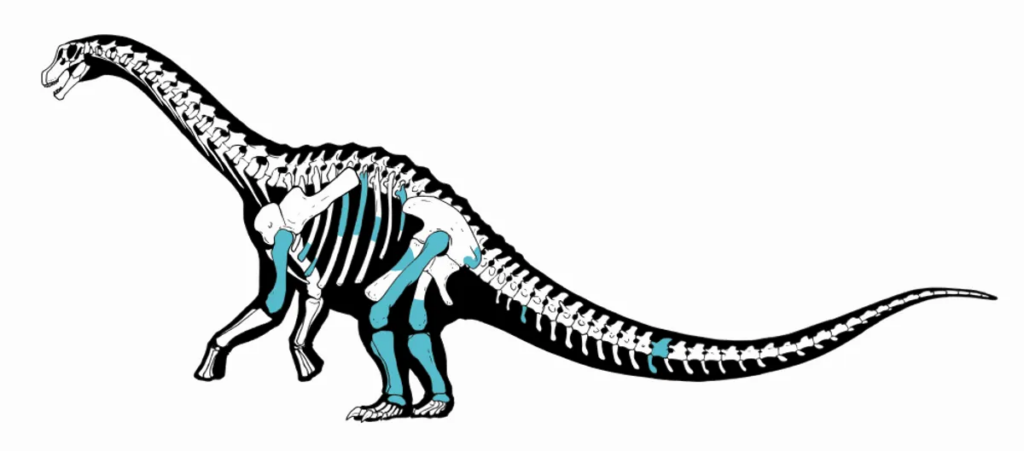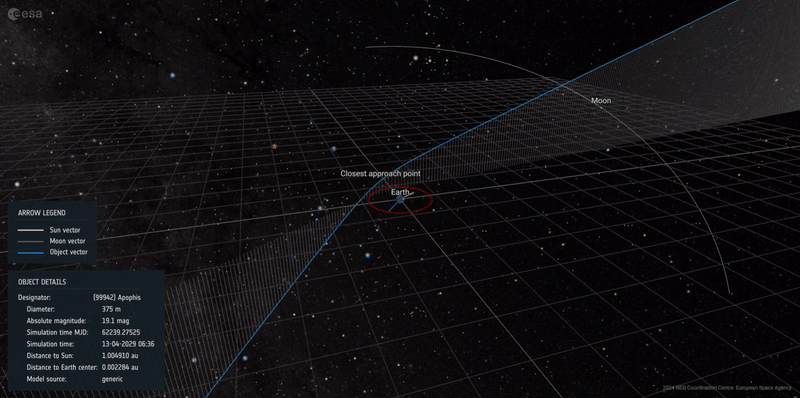A new species of Titanosaurus has been described in Argentina. Found in rocks nearly 70 million years old, the mini-robot was named Titanomachya gimenezi and was 10 times smaller than its larger titanosaur relatives, making it one of the smallest ever described.
The fossils were found in the province of Chubut in Patagonian Argentina, where scientists were excavating the La Colonia Formation. There, they discovered the forelimbs and hindlimbs, as well as fragments of ribs and vertebrae, of an enigmatic species of Titanosaurus, the first sauropod from the La Colonia Formation ever to be recognized.

Titanomachya gimenezi fossils found in the La Colonia Formation.
Elsewhere in Argentina, some of the largest dinosaurs ever to roam the Earth have been found, including a colossal boulder, the Patagotitan mayor (Patagotitan mayorum). At the other end of the scale is Titanomachy, weighing around 7 tons and – as Riley Black wrote for National Geographic – about the size of a giant cow, making it about 10 times smaller than Patagotitan.
Titanomachy lived in the Maastrichtian, the last period of the Cretaceous period, before the mass extinction. Its fossils were found in a formation that yielded everything from hulking carnivores to plesiosaurs, turtles and reptiles, but it soon became clear that this titanosaur wasn't anything they'd seen before.
"The morphology of the talus - the bone responsible for distributing the force that comes from the tibia to the inside of the foot - has never been seen before in other titanosaurs and shows intermediate features between the Colossosauria and Saltasauroidea lineages, underscoring its evolutionary importance," said first author of the study Agustin Pérez Moreno of CONICET and the Museum of La Plata in a statement.
The discovery was made as part of a project on the end of the age of dinosaurs in Patagonia, which is funded by the National Geographic Society with the support of more than 10 museums and universities in Argentina, including the Museum of La Plata. It aims to fill a gap in our knowledge of the last 15 million years of the Cretaceous period, and of the dinosaurs and vertebrates that lived in the region during that time.
This period of geologic time has historically been better studied in northern regions, and we hope that excavations in the south will allow scientists to determine extinction patterns here compared to the rest of the world. Already, the project gives an idea of the dinosaur landscape in Patagonia in the Late Cretaceous era.
"The discovery of Titanomachy complements previous evidence that suggests that the end of the Cretaceous period saw significant environmental changes, marked by the reduction in size of titanosaurs, the decline in their numbers and the predominance of other herbivorous dinosaurs, such as hadrosaurs, on the landscape," said National Geographic researcher Diego Paul in his release. "This ecological shift of herbivorous dinosaurs occurred against a backdrop of climate and habitat change, as well as the encroachment of the Atlantic Ocean on much of Patagonia."


 787
787












